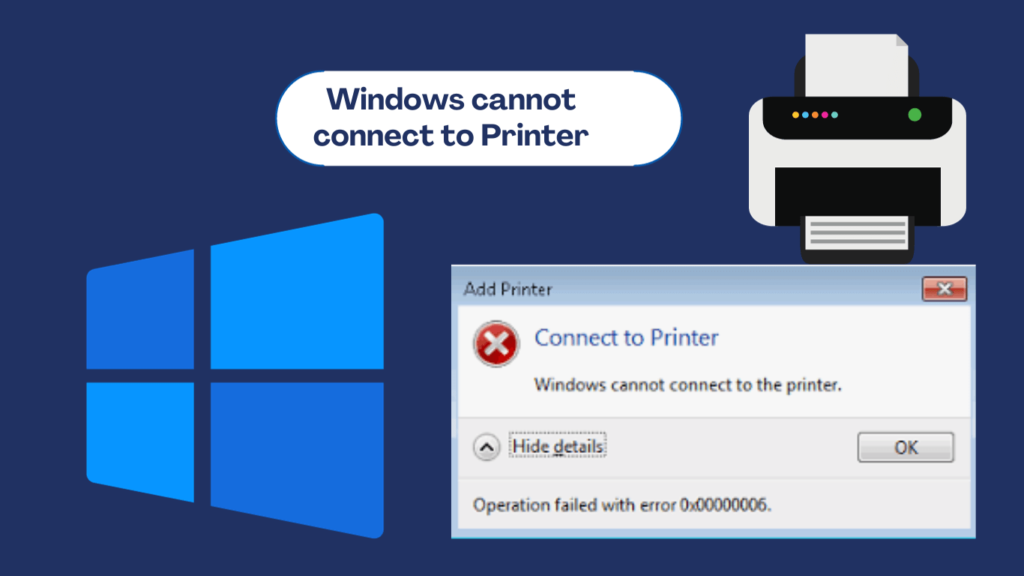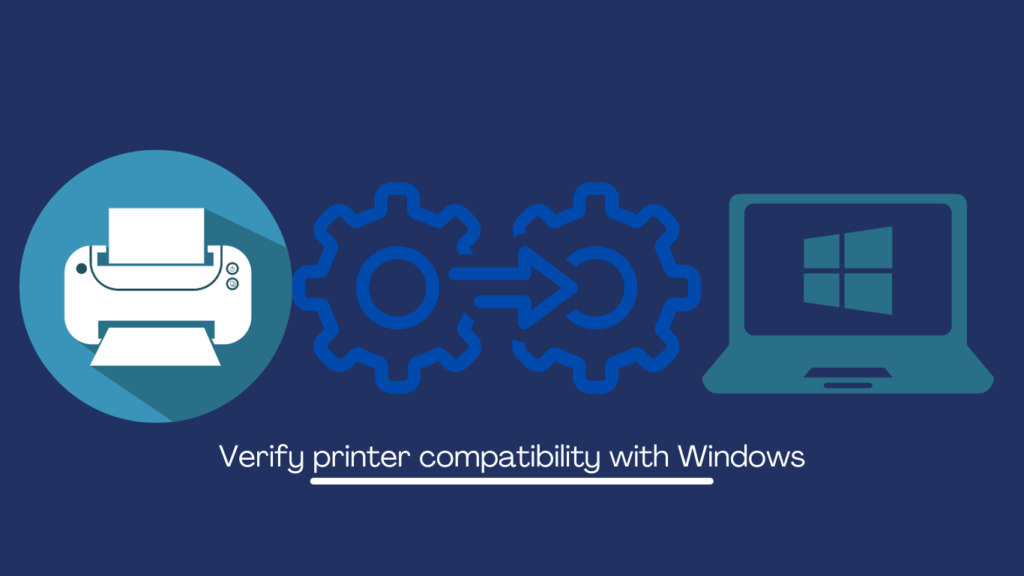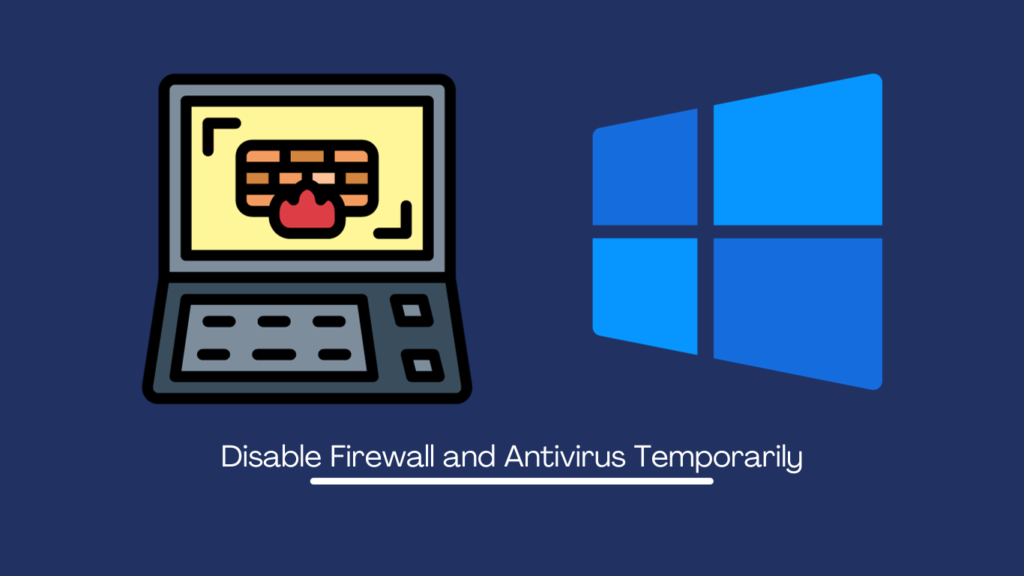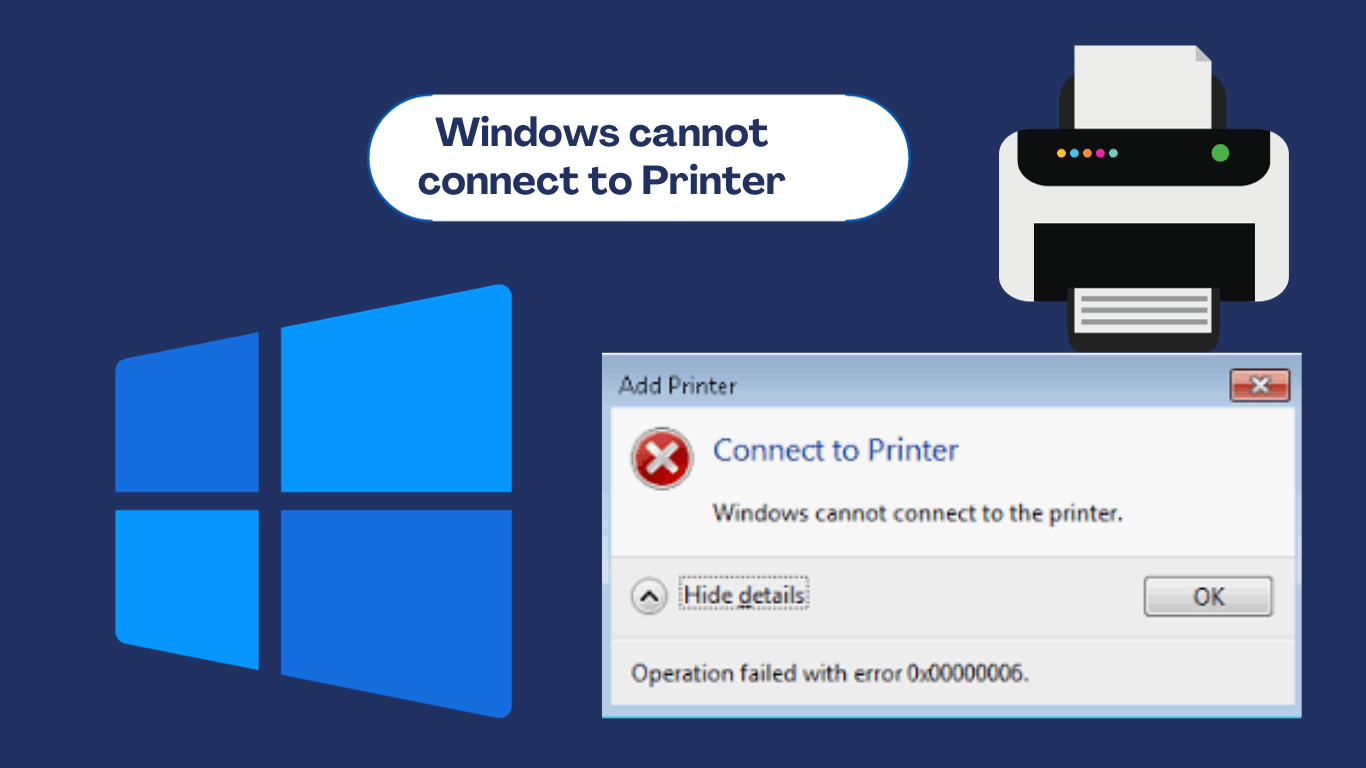Windows cannot connect to Printer: Have trouble connecting your Windows computer to a printer? You’re not alone. Many Windows users encounter the frustrating issue of not being able to connect their computer to a printer. This can be a major hindrance, especially when you need to print important documents or complete urgent tasks.

In this troubleshooting guide, we will explore the common causes of this issue and provide step-by-step instructions on how to resolve it. By following these troubleshooting steps, you’ll be able to get your Windows computer connected to your printer in no time.
Common causes of the “Windows cannot connect to Printer” issue
There are several common causes that can prevent Windows from connecting to a printer.
- Power issue: One possible cause is a faulty printer connection or power issue. Ensure that all cables are securely connected and that the printer has power.
- Compatibility issues: another common cause is compatibility issues between the printer and Windows. Some older printers may not be compatible with the latest versions of Windows. In such cases, you may need to update your printer or consider purchasing a newer model.
- Outdated or corrupted printer drivers: Outdated or corrupted printer drivers can also cause connectivity issues. It is crucial to keep your printer drivers up to date to ensure proper communication between the printer and your computer.
How to Fix Windows cannot connect to Printer
1: Check printer connections and power
Start by checking the physical connections between your computer and the printer. Ensure that the USB cable or network cable is securely plugged in at both ends. If your printer has a wireless connection, make sure it is connected to the same network as your computer.
Additionally, ensure that your printer has power and is turned on. Sometimes, simply reseating the cables or turning the printer off and on can resolve connectivity issues.
2: Verify printer compatibility with Windows
If your printer is not compatible with the version of Windows you are using, you may encounter connectivity issues. Check the manufacturer’s website or the printer’s manual for information on compatibility with your operating system.

If your printer is not compatible, you might need to upgrade to a newer model that supports your version of Windows.
3: Update Printer Drivers
Outdated or corrupted printer drivers can cause communication problems between your computer and the printer. To update your printer drivers, follow these steps:
STEP#1. Press the Windows key + X on your keyboard and select “Device Manager” from the menu.
STEP#2. In the Device Manager window, locate and expand the “Printers” section.
STEP#3. Right-click on your printer and select “Update driver.”
STEP#4. Choose the option to automatically search for updated driver software.
STEP#5. Windows will search for and install the latest driver for your printer.
4: Restart the Print Spooler Service
The Print Spooler service manages all print jobs on your computer. If this service is not running or encountering issues, it can prevent your computer from connecting to the printer. To restart the Print Spooler service, follow these steps:
STEP#1. Press the Windows key + R on your keyboard to open the Run dialog box.
STEP#2. Type “services.msc” and press Enter to open the Services window.
STEP#3. Scroll down and locate the “Print Spooler” service.
STEP#4. Right-click on the Print Spooler service and select “Restart.”
5: Check Network Connectivity
If you are using a network printer, ensure that your computer is connected to the same network as the printer. Check your network settings and verify that your computer has a stable connection to the network.
You can also try restarting your router or modem to resolve any network issues that may be preventing your computer from connecting to the printer.
6: Disable Firewall and Antivirus Temporarily
Firewall and antivirus software can sometimes block the communication between your computer and the printer. Temporarily disabling these security programs can help determine if they are causing the connectivity issue. Remember to re-enable them once you have resolved the printer connection problem.

7: Reset the Printer Settings
Resetting the printer settings can often resolve connectivity issues. To reset your printer settings, follow these steps:
STEP#1. Press the Windows key + R on your keyboard to open the Run dialog box.
STEP#2. Type “control” and press Enter to open the Control Panel.
STEP#3. In the Control Panel, select “Devices and Printers.”
STEP#4. Right-click on your printer and select “Remove device.”
STEP#5. After removing the printer, click on “Add a printer” and follow the on-screen instructions to reinstall it.
8: Reinstall the Printer
If all else fails, reinstalling the printer on your computer may resolve the connectivity issue. To reinstall the printer, follow these steps:
STEP#1. Press the Windows key + R on your keyboard to open the Run dialog box.
STEP#2. Type “control” and press Enter to open the Control Panel.
STEP#3. In the Control Panel, select “Devices and Printers.”
STEP#4. Right-click on your printer and select “Remove device.”
STEP#5. After removing the printer, click on “Add a printer” and follow the on-screen instructions to reinstall it.
Conclusion and final thoughts: Windows cannot connect to Printer
Troubleshooting connectivity issues between your Windows computer and a printer can be frustrating, but by following the steps outlined in this guide, you should be able to resolve the issue. Always start by checking the physical connections and power supply of the printer. Next, verify the compatibility of your printer with your version of Windows and update the printer drivers if necessary.
Restarting the Print Spooler service, checking network connectivity, and temporarily disabling the firewall and antivirus software can also help resolve the issue. If all else fails, resetting or reinstalling the printer may be the solution.
By following these troubleshooting steps, you’ll be able to connect your Windows computer to your printer and resume printing without any further issues. Remember, if you continue to experience problems connecting your Windows computer to a printer, it may be beneficial to contact the manufacturer’s support team for further assistance.
You can also try the same solutions on the below the error-

